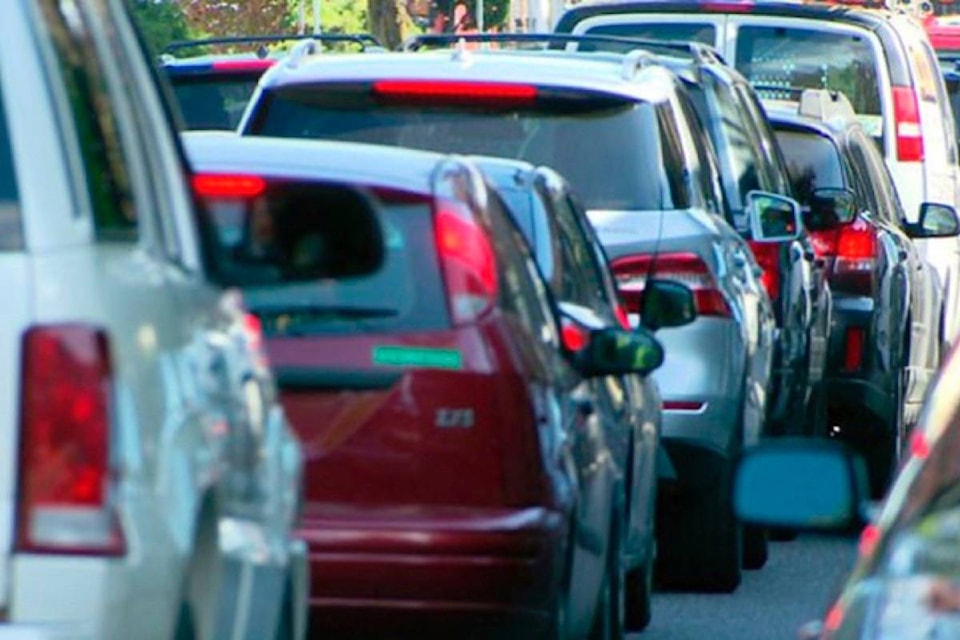Cars whizzing by at breakneck speeds, horns blaring, people shouting to be heard over the chaos: that’s how people envision driving in some parts of the country.
In reality, that sounds more like the hustle and bustle of Metro Manila, Philippines at rush hour than it does the quiet city streets of Vernon.
The incessant honking of horns rings through the air at all times in the Philippines. In Canada, it would be considered rude to honk if it isn’t warranted. In Manila, however, it’s used as a mere, “I’m here, don’t merge into this lane or bad things will happen,” warning.
Canadian motorcyclists often instil terror in nearby vehicles. They’re small, they’re fast and they’re dangerous. Filipino motorcyclists have a far different point of view. They’re small, they’re fast and they’re fearless. Motorcyclists bob and weave through traffic like a ball dropped into a city street-sized Plinko board as they snake their way to the front of the line.
Jeepneys, the brightly coloured and extravagantly decorated iconic transport vehicle of the Philippines, are jam-packed with people. It’s a vehicle that could comfortably fit 10, yet 20 or more clamour into the back with extra riders holding on to the back while standing on the bumper or decide to simply sit on the roof.
Traffic lanes are mere suggestions, and they’re ignored more often than they are followed. The same goes for stop signs, which, in Manila, are simply vibrant red decorations that sit on street corners that few people seem to recognize.
Not that any of the rules of the road matter in Manila as drivers are stuck in almost constant gridlock. But, when they’re not riding the bumper of a Jeepney acting as a rather uncomfortable seat for several pedestrians, drivers are of the mindset the faster the better.
The system is far from perfect. It is deeply flawed, but it works.
Accidents do happen in Manila and on the similarly unlawful highways. However, in the several days that I witnessed this seemingly uncontrolled chaos, no one was injured, no motorcycles were toppled, no fenders were bent — everything and everyone carried on in their usual fashion.
While that would never fly in Canada, it does pose an interesting question: if drivers in Manila can still operate in such a hostile environment, why are traffic accidents as prevalent as they are in a place like Canada and British Columbia, which saw more than 350,000 accidents in 2017? Why are nearly 400 kids injured each year while walking or cycling in B.C.?
Related: ICBC says nearly 400 kids injured each year
Related: Crashes reach ‘all-time high’ across B.C.: ICBC
We have lanes, lights, stop signs, crosswalks and yield signs galore, all of which are routinely obeyed, yet mishaps still occur.
Perhaps the hectic streets of Manila force drivers to be more cognizant of their surroundings and, therefore, are less likely to check their social media channels with one hand while holding a frappuccino in the other.
Yes, there are problematic intersections and areas that require upgrades to increase safety, but the core of the issue is contained much deeper than that.
Related: Stickle Road excavation work proceeds
According to Insights West’s 2017 study, 41 per cent of drivers admitted to driving while distracted, 22 per cent admitted to a lack of respect for driving rules, 16 per cent said they speed and 12 per cent said they drive aggressively.
We certainly don’t want to import the Philippines’ lack of driving regulation, but the average Canadian driver could stand to learn a thing or two.
That’s not to say that driving conditions are better in the Philippines – they aren’t. According to a May 2017 article in the PhilStar, 34 Filipinos die daily as a result of road accidents. Over the course of one year, that equals an estimated 12,410, or about 0.01 per cent of the population. Canada boasts less tragic statistics with 1,898 fatalities in 2016 or about 0.005 per cent of the population.
The fact is that Canadian statistics are still too high and more needs to be done.
There is no such thing as too much when it comes to safety.
@VernonNews
parker.crook@vernonmorningstar.com
Like us on Facebook and follow us on Twitter.
